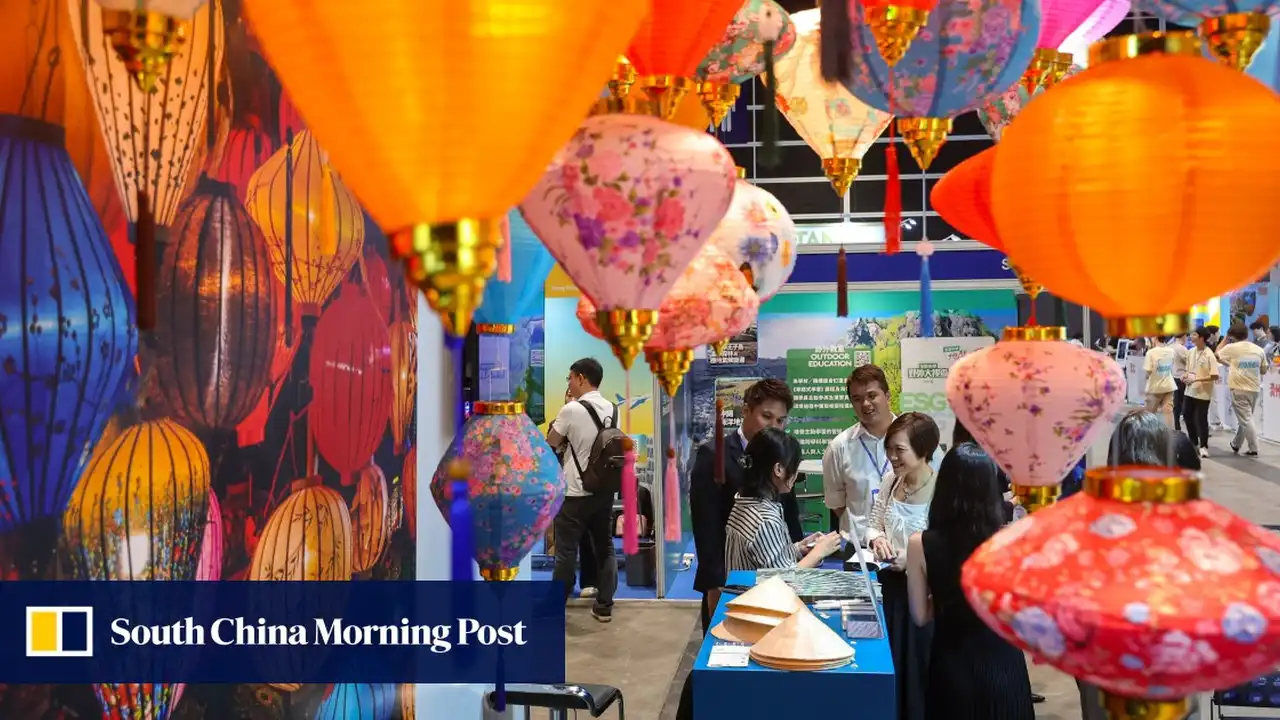Hong Kong Electricity: Adapters and Voltage Information

Understanding Hong Kong Voltage and Frequency: Powering Your Devices
So, you're heading to Hong Kong? Awesome choice! Get ready for amazing food, stunning skylines, and a vibrant culture. But before you even think about dim sum and taking that perfect Victoria Peak photo, let's talk about something crucial: electricity! You don't want to fry your favorite phone charger or hair dryer, right? This guide will break down everything you need to know about Hong Kong's electricity system, including voltage, frequency, plug types, adapter recommendations, and even some product comparisons to make your travel life easier.
First things first: Hong Kong operates on 220 volts AC at 50 Hz. This is different from countries like the United States and Canada, which use 110-120 volts. The frequency (Hz) refers to how many times the alternating current cycles per second. While voltage differences are a major concern, frequency differences are usually less of a problem for modern electronic devices. Most modern power adapters are designed to handle a range of frequencies. However, older appliances, especially those with motors (like some hairdryers), might be affected by the difference in frequency and could potentially overheat or malfunction. It's always best to check the specifications on your devices before plugging them in.
Hong Kong Plug Types: G is the Key!
Now, let's talk plugs. Hong Kong uses the Type G plug, which is a British standard. This is a three-pronged plug with rectangular pins. If you're coming from a country that uses a different plug type (like the US, Europe, or Australia), you'll absolutely need an adapter. Don't even think about trying to force your plug into the socket – you'll just damage something (or yourself!).
Here’s a breakdown of common plug types and whether you'll need an adapter:
- United States (Type A/B): Yes, you'll need an adapter.
- Europe (Type C/E/F): Yes, you'll need an adapter.
- Australia/New Zealand (Type I): Yes, you'll need an adapter.
- United Kingdom (Type G): Nope, you're good to go!
Choosing the Right Hong Kong Adapter: Safety and Functionality
Okay, so you need an adapter. But which one should you choose? There are tons of options out there, from cheap and flimsy ones to more robust and versatile models. Here's what to look for:
- Universal Adapters: These are great if you travel frequently to different countries. They usually have multiple plug configurations that can be adapted to fit various socket types.
- Dedicated Hong Kong Adapters: These are simpler and often cheaper than universal adapters, but they only work in Hong Kong (and other countries that use Type G plugs).
- Surge Protection: This is a must-have! Hong Kong's power grid can sometimes experience surges, which can damage your electronic devices. Look for an adapter with built-in surge protection to keep your gadgets safe.
- USB Ports: Many adapters now come with USB ports, which are super handy for charging your phone, tablet, or other USB-powered devices. This can save you from having to carry multiple chargers.
- Quality and Safety Certifications: Make sure the adapter you choose has been tested and certified by a reputable organization. Look for markings like CE or RoHS. This ensures that the adapter meets safety standards and won't pose a fire hazard.
Recommended Hong Kong Adapters: Product Comparisons and Reviews
Let's get down to specifics. Here are a few adapter recommendations, along with their pros, cons, and price ranges (prices are approximate and may vary):
1. BESTEK Universal Travel Adapter with USB Ports and Surge Protection
Description: This is a popular universal adapter that works in over 150 countries, including Hong Kong. It has multiple USB ports and built-in surge protection.
Pros: Versatile, includes USB ports, surge protection, relatively compact.
Cons: Can be a bit bulky, slightly more expensive than dedicated adapters.
Use Case: Ideal for frequent travelers who need an adapter that works in multiple countries.
Price: $25 - $35
2. Ceptics World Travel Adapter Plug with Dual USB Ports
Description: Another good universal adapter option, the Ceptics adapter offers dual USB ports and is compatible with outlets in North America, the United Kingdom, Europe, Australia, and Japan.
Pros: Compact design, two USB charging ports, can be used in several different countries.
Cons: May feel less sturdy compared to some other adapters, USB charging may be slower for some devices.
Use Case: Great for travelers who want a simple and reliable adapter with USB charging capabilities.
Price: $20 - $30
3. EPICKA Universal Travel Adapter
Description: A durable and versatile travel adapter with Smart High-Speed Charging and a multi-plug design, usable in most countries.
Pros: High-speed charging, durable build, supports multiple plug types simultaneously.
Cons: Can be somewhat large and heavy, slightly higher price point.
Use Case: Suitable for travelers who need to charge multiple devices quickly and reliably.
Price: $30 - $40
4. Simple Hong Kong Adapter (Type G)
Description: A basic, dedicated adapter for Hong Kong (Type G plugs).
Pros: Inexpensive, lightweight, simple to use.
Cons: Only works in countries with Type G plugs, no USB ports, no surge protection (usually).
Use Case: Best for travelers who are only visiting Hong Kong and don't need USB charging or surge protection.
Price: $5 - $10
Using Voltage Converters: When and Why You Need One
While most modern electronic devices (like phones, tablets, and laptops) have built-in voltage converters that can handle a range of voltages (usually 100-240V), some appliances, especially older ones or those with heating elements (like hairdryers, curling irons, and electric shavers), may only be designed for a specific voltage. If your device is only rated for 110-120V, you'll need a voltage converter to use it safely in Hong Kong.
How to tell if you need a voltage converter:
- Check the label on your device: Look for a label that indicates the input voltage. If it says "100-240V," you're good to go with just an adapter. If it says "110-120V," you'll need a voltage converter.
- Consider the appliance type: Devices with heating elements are more likely to require a voltage converter.
Types of Voltage Converters:
- Transformer: These are heavy and bulky but can handle high-wattage appliances.
- Electronic Converter: These are lighter and more compact but may not be suitable for all appliances.
Important Note: Make sure the voltage converter you choose can handle the wattage of your appliance. The wattage rating should be clearly marked on the converter.
Powering Your Hair Dryer in Hong Kong: A Specific Case
Let's say you're particularly attached to your favorite hair dryer. Many North American hair dryers are only designed for 110-120V. Using them directly in Hong Kong's 220V outlets will likely result in a fried hair dryer (and potentially a blown fuse!).
Options for using your hair dryer:
- Use a voltage converter: This is the most common solution. Choose a voltage converter that can handle the wattage of your hair dryer (check the label on the hair dryer).
- Buy a dual-voltage hair dryer: This is a more convenient option if you travel frequently. Dual-voltage hair dryers can operate on both 110-120V and 220-240V.
- Buy a hair dryer in Hong Kong: This might be the easiest option if you're staying for an extended period.
Important Safety Tip: Never leave a voltage converter unattended while it's in use. Overheating can be a fire hazard.
Finding Adapters in Hong Kong: Local Purchase Options
Forgot to pack an adapter? Don't panic! You can easily find adapters in Hong Kong. Here are a few places to look:
- Electronics Stores: Major electronics retailers like Fortress, Broadway, and Suning usually carry a wide selection of adapters.
- Convenience Stores: 7-Eleven and Circle K often have basic adapters available.
- Department Stores: Department stores like SOGO and Lane Crawford also sell adapters.
- Airport: The airport shops are a convenient option if you need an adapter as soon as you arrive. However, prices at the airport are usually higher than in the city.
- Street Markets: You might be able to find cheaper adapters at street markets, but be sure to check the quality and safety certifications.
Hong Kong Power Outages: Being Prepared
While Hong Kong has a very reliable power grid, power outages can occasionally occur. It's always a good idea to be prepared.
Tips for dealing with power outages:
- Keep a flashlight handy: This is essential for navigating in the dark.
- Have a portable power bank: This will allow you to charge your phone and other devices.
- Know the emergency contact numbers: In case of a serious emergency, you'll need to be able to contact the authorities.
- Be patient: Power outages are usually resolved quickly in Hong Kong.
Hong Kong Electricity Costs: A Quick Overview
Understanding the electricity costs in Hong Kong can be helpful if you're planning a long-term stay. Electricity prices in Hong Kong are generally higher compared to some other regions due to factors like import costs and infrastructure maintenance. The electricity consumption is typically measured in kilowatt-hours (kWh), and your bill will reflect the amount of electricity you've used over a billing period.
Factors Affecting Electricity Costs:
- Usage: Obviously, the more electricity you use, the higher your bill will be.
- Season: Electricity consumption tends to be higher during the summer months due to air conditioning use.
- Tariff: Different electricity providers may offer different tariffs.
Tips for Saving Electricity:
- Use energy-efficient appliances: Look for appliances with high energy efficiency ratings.
- Turn off lights when you leave a room: This is a simple but effective way to save energy.
- Unplug electronics when not in use: Many electronics continue to draw power even when they're turned off.
- Use air conditioning sparingly: Try to use fans instead of air conditioning whenever possible.
Power Adapters vs. Power Converters: Key Differences
It is important to highlight the difference between power adapters and power converters. A power adapter simply changes the shape of the plug so that it can fit into a different type of outlet. It does not change the voltage or frequency of the electricity. A power converter, on the other hand, changes the voltage of the electricity. This is necessary when your device is not designed to handle the voltage of the outlet. For example, if you are traveling from the United States (110-120V) to Hong Kong (220V), you will need a power converter to use devices that are not dual-voltage.
Safety Tips for Using Electrical Devices in Hong Kong
Ensuring safety when using electrical devices in Hong Kong is paramount. Here are some critical safety tips to keep in mind:
- Inspect Adapters and Converters: Before using any adapter or converter, thoroughly inspect it for any signs of damage, such as frayed cords or loose connections.
- Avoid Overloading Outlets: Do not plug too many devices into a single outlet or power strip. Overloading can cause overheating and potentially lead to a fire.
- Keep Electrical Devices Away from Water: Never use electrical devices in or near water. This includes bathrooms, kitchens, and swimming pools.
- Use Certified Products: Ensure that all adapters, converters, and power strips are certified by reputable organizations. This ensures they meet safety standards.
- Unplug When Not in Use: When not in use, unplug electrical devices to save energy and reduce the risk of electrical hazards.
- Monitor for Overheating: If an adapter, converter, or device starts to overheat, unplug it immediately and discontinue use.
- Be Aware of Surge Protection: Use adapters and power strips with built-in surge protection to protect your devices from power surges.
Understanding Hong Kong's Electrical Grid
Hong Kong's electrical grid is known for its reliability and efficiency. It is primarily powered by two major electricity providers: CLP Power Hong Kong Limited (CLP) and Hong Kong Electric Company Limited (HKE). These companies are responsible for generating, transmitting, and distributing electricity to different parts of Hong Kong.
CLP Power Hong Kong Limited (CLP):
- Supplies electricity to Kowloon, the New Territories, and most of the outlying islands.
- Operates a mix of power generation facilities, including coal-fired, gas-fired, and nuclear power plants.
- Committed to reducing carbon emissions and increasing the use of renewable energy sources.
Hong Kong Electric Company Limited (HKE):
- Supplies electricity to Hong Kong Island and Lamma Island.
- Primarily relies on gas-fired power plants for electricity generation.
- Focuses on enhancing energy efficiency and promoting sustainable energy practices.
Understanding the structure of Hong Kong's electrical grid can provide insights into the stability and reliability of the power supply, as well as the ongoing efforts to improve energy efficiency and reduce environmental impact.
:max_bytes(150000):strip_icc()/277019-baked-pork-chops-with-cream-of-mushroom-soup-DDMFS-beauty-4x3-BG-7505-5762b731cf30447d9cbbbbbf387beafa.jpg)






